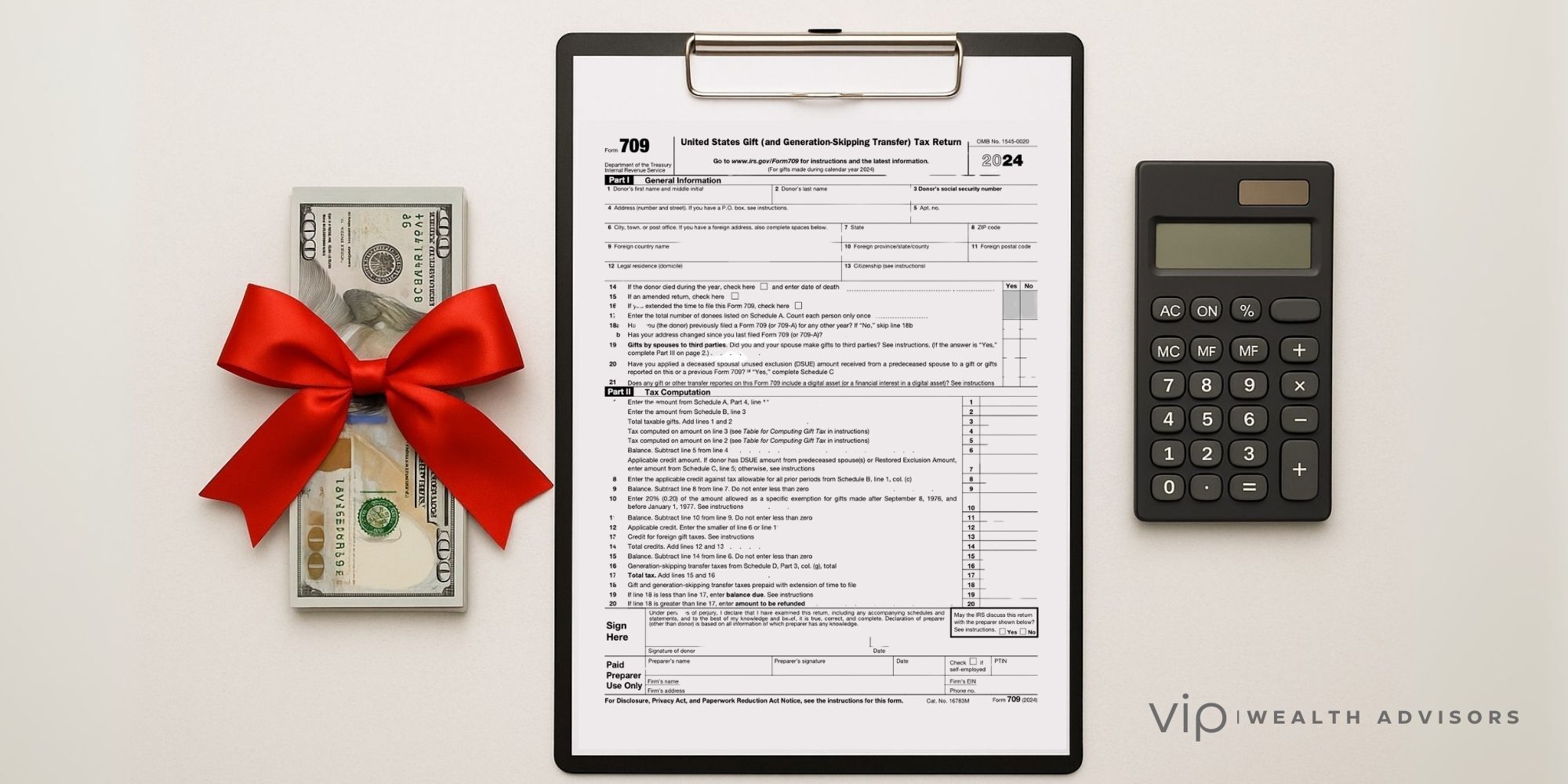If you're planning for education, whether for your children, grandchildren, or future generations, a 529 plan offers one of the most flexible and tax-advantaged ways to invest in opportunity.
Used correctly, it can serve as a tax shelter, estate planning tool, and vehicle for multigenerational wealth transfer, all while funding education tax-free. But most investors barely scratch the surface of what a 529 can do.
In this comprehensive article, we'll cover everything you need to know about 529 plans, including how ownership changes work (and whether they trigger gift tax), contribution rules, Roth rollovers, and advanced planning strategies the ultra-wealthy use to turn 529s into family education trusts.
What Is a 529 Plan and How Does It Work?
A 529 plan, named after Section 529 of the Internal Revenue Code, is a tax-advantaged savings plan designed to help families pay for education costs.
While states administer 529s, you can typically use the funds at eligible institutions anywhere in the U.S. and even abroad.
There are two main types of 529 plans:
Education Savings Plans
These function like investment accounts. You contribute after-tax dollars, choose from a menu of portfolios (often age-based), and the money grows tax-deferred. Withdrawals are tax-free if used for qualified education expenses. According to the Congressional Research Service, roughly 95% of all 529 assets are held in this type of plan.
Prepaid Tuition Plans
These allow you to lock in future tuition costs at today's prices, typically at in-state public universities. They're less flexible and cover tuition only, not room and board, but can be a hedge against tuition inflation.
Why Use a 529 Plan? The Triple Advantage
Tax-Free Growth and Withdrawals
Money grows tax-deferred and can be withdrawn tax-free for qualifying expenses, such as tuition, books, room and board, or even K-12 education, up to annual limits. The SEC and IRS confirm that distributions for qualifying expenses are exempt from both federal income tax and capital gains.
Estate and Gift Tax Efficiency
This is where 529s shine for high-net-worth families. Contributions are considered completed gifts to the beneficiary, which removes them from your taxable estate, but you still retain control over the funds as account owner.
You can even superfund a 529, contributing up to five years' worth of annual gift exclusions at once. In 2025, that's up to $95,000 per donor, or $190,000 per married couple, per beneficiary.
Forbes calls this "one of the most underused estate planning moves for the affluent."
Financial Aid Benefits
Parent-owned 529 plans are counted lightly in the FAFSA formula, at roughly 5.6% of the assets' value, while distributions are not treated as income.
Under the new FAFSA rules, even distributions from grandparent-owned 529 accounts no longer count as student income, making them more aid-friendly than ever. However, private colleges using the CSS Profile may still count grandparent 529s differently.
Contribution, Gift, and Estate Rules
Annual Gift Exclusion and Superfunding Strategy
Each year, you can contribute up to the annual gift exclusion ($19,000 per person in 2025) to a 529 without triggering gift tax. Larger contributions can utilize the five-year election, allowing you to front-load up to $95,000 at once.
If you die within that five-year window, part of the contribution is pulled back into your estate. Still, the strategy remains incredibly powerful for reducing taxable estates and front-loading growth.
State Contribution Limits
Every state sets its own maximum aggregate limit, typically ranging from $235,000 to $550,000 per beneficiary. Once you hit that ceiling, you can't contribute more, but the account can continue to grow beyond it.
Qualified vs. Nonqualified Withdrawals
Withdrawals are tax-free for qualified education expenses, including:
- College tuition and fees
- Room and board (if enrolled at least half-time)
- Books, computers, the internet, and software
- Apprenticeship programs and certain professional certifications
- Up to $10,000 per year for K-12 tuition
- Up to $10,000 lifetime per person for student loan repayment
If funds are used for non-qualified purposes, only the earnings portion is taxed as ordinary income and hit with a 10% penalty. Exceptions exist for scholarships, military academies, disability, or the death of the beneficiary. (SEC)
Changing Beneficiaries and Ownership: What the IRS Actually Says
Changing Beneficiaries
If you change the beneficiary to another family member (like a sibling or cousin), it's typically not a taxable event. But if you move assets down a generation—say, from your child to your grandchild—the IRS treats it as a gift equal to the account's fair market value. That means a potential Form 709 filing and reduction of lifetime exemption.
Changing Ownership: Is It a Gift?
Here's the big question that sparks debate: Does changing a 529 plan's owner trigger gift tax?
According to federal tax law—no. Section 529 focuses on the beneficiary, not the owner. The owner is more akin to a custodian with control rights, rather than a beneficial owner.
So, if you transfer ownership from a parent to a grandparent but keep the same beneficiary, there's no taxable gift at the federal level.
However, as other sources note, a few state plans treat ownership changes as distributions and may issue a 1099. That's why you should always check the plan documents before making any ownership transfer.
In short:
- Parent → Grandparent (same beneficiary) = Generally not a gift.
- Parent → Grandparent (new beneficiary) = Possibly a gift.
- Parent → Grandparent, plan issues 1099 = Potential taxable event.
When in doubt, coordinate with a tax advisor before making the switch.
Coordination with Education Credits and Tax Benefits
529 plans can overlap with other education tax benefits, but you can't "double-dip."
For example, if you use 529 funds to pay tuition that you also claim for the American Opportunity Credit, the IRS will disallow one of them. A smart strategy: pay $4,000 of tuition out of pocket (to claim the full credit), then use 529 funds for other qualified expenses.
The 529-to-Roth IRA Rollover: A Game-Changer
One of the most exciting recent developments came from the SECURE 2.0 Act. Starting in 2024, you can roll over unused 529 funds into a Roth IRA for the same beneficiary, subject to these limits:
- The 529 must have been open for at least 15 years.
- Rollovers are capped at $35,000 per lifetime for each beneficiary.
- Annual Roth IRA contribution limits still apply.
- The rollover must be a direct trustee-to-trustee transfer.
This change gives unused 529 funds a new life as long-term, tax-free retirement savings—an elegant solution for overfunded accounts.
529 Plans and Financial Aid: The FAFSA Factor
Parent-owned 529s count as a parental asset on FAFSA, but distributions don't count as income. Grandparent-owned 529s used to be treated less favorably—but under the latest FAFSA simplification, distributions from grandparent-owned plans no longer count as student income.
Still, timing matters. If a grandparent plans to help with education costs, consider making distributions after the student's junior-year FAFSA is filed to minimize any potential aid impact.
Advanced Strategies: How Wealthy Families Maximize 529s
1. The "Dynasty 529" for Multigenerational Education Funding
A family can set up a 529 plan, fund it aggressively, and change beneficiaries over time as new generations go to college. Since the plan can stay open indefinitely, it becomes a multigenerational education trust with perpetual tax-free growth.
However, the IRS could challenge rapid succession changes as a "step transaction," so maintain clear timing and documentation.
2. Grandparent Superfunding
Grandparents can contribute up to $190,000 jointly in one year (using the five-year election) for each grandchild—immediately removing that amount from their estate while retaining control as account owners.
3. Strategic Ownership Changes for Financial Aid Optimization
Transferring 529 ownership to a grandparent (without changing the beneficiary) can, in some cases, improve a student's aid profile—particularly under the new FAFSA rules. But since plan-specific quirks exist, verify before making moves.
4. Estate and Gift Tax Synchronization
Couples can use coordinated 529 contributions as part of a broader wealth transfer plan. Combined with annual exclusion gifting and direct tuition payments (which are not considered gifts), this can meaningfully reduce future estate tax exposure.
Common Pitfalls to Avoid
- Assuming all expenses qualify: Room and board are only qualified if the student is enrolled at least half-time.
- Overfunding: You can now roll to a Roth IRA, but only within limits—don't lock up too much cash.
- Ignoring plan rules: Some states don't allow ownership changes, or they treat them as distributions.
- Double-dipping with tax credits: Always coordinate 529 usage with your tax advisor.
- Neglecting documentation: Keep records of contributions, ownership transfers, and beneficiary changes.
Real-World Example: Multigenerational Education and Estate Planning in One Move
Imagine a retired engineer who has recently sold his business and is now considering a legacy; not just leaving money behind, but funding an opportunity. In 2025, he decides to open a 529 plan for his newborn granddaughter and contributes $95,000 immediately, using the five-year gift tax election.
That single move accomplishes several things at once:
- Estate reduction: Since the contribution is treated as a completed gift to the beneficiary, the $95,000 is removed from his taxable estate immediately, even though he still retains control of the account as the owner.
- Tax-free compounding: Over the next 18 years, he invests the funds in an age-based portfolio that gradually shifts from equities to bonds. By the time his granddaughter starts college, the account has grown to $180,000. Every dollar of growth is income-tax-free when used for qualified education expenses.
- Scholarship flexibility: Suppose the granddaughter receives a full scholarship worth $40,000 per year. Under IRS rules, the grandparent can withdraw up to $40,000 annually from the 529 account without paying the 10% penalty that usually applies to non-qualified withdrawals. However, while the penalty is waived, the earnings portion of the withdrawal is still subject to ordinary income tax.
- Example: If $10,000 of that $40,000 withdrawal represents earnings, he'll owe income tax on that $10,000, but no penalty.
- Alternatively, if he doesn't need the money personally, he can transfer the remaining balance to another grandchild’s 529 plan or leave the funds invested for future generations.
- He could also use a Roth IRA rollover later, provided the account has been open for at least 15 years and other SECURE 2.0 conditions are met.
- Multigenerational leverage: If the funds remain untouched, the account can stay invested and be reassigned to the next generation without triggering taxes or penalties—effectively turning a college savings plan into a dynasty-style family education trust.
In other words, a single front-loaded 529 contribution gives this family a head start on education costs, a lifetime of tax-free compounding, and meaningful estate tax savings, all while maintaining control and flexibility.
Putting It All Together: How to Make 529 Plans Work for You.
529 plans are far more than college savings accounts; they're versatile, tax-efficient, estate-friendly tools that can fund education for generations. Whether you're a high-income tech professional, an entrepreneur, an executive, or a grandparent looking to leave a lasting legacy, understanding how to structure and control your 529s can unlock serious long-term advantages.
Before making ownership or beneficiary changes, always confirm how your state plan handles transfers and coordinate with a qualified tax professional or CFP®.
Used strategically, a 529 isn't just about paying for school; it's about preserving wealth, maximizing flexibility, and building a financial legacy that educates future generations.
Frequently Asked Questions About 529 Plans
Q1: Does transferring 529 ownership count as a gift?
Q2: Can I change the beneficiary of a 529?
Q3: How much can I contribute each year?
Q4: What if my child doesn't go to college?
Q5: Do 529 plans affect financial aid?
Q6: Can I invest in any state's 529 plan?
Q7: Can I roll a 529 into a Roth IRA?
🎓 Make your 529 do more than pay tuition
At VIP Wealth Advisors, we help high-income families turn 529 plans into a coordinated strategy for tax savings, estate planning, and multigenerational impact.
View More Articles by Topic
- Taxes (73)
- Financial Planning (39)
- Equity Compensation (32)
- Investments (22)
- RSU (21)
- Tax Policy & Legislation (18)
- Business Owner Planning (14)
- Incentive Stock Options (14)
- Retirement (13)
- Psychology of Money (10)
- Real Estate (9)
- AMT (8)
- Alternative Investments (8)
- Pre-IPO Planning (8)
- Estate Planning (7)
- NSOs (6)
- The Boring Investment Strategy (6)
- Capital Gains Tax (5)
- Crypto (5)
- Fiduciary Standard (5)
- QSBS (5)
- Post-IPO Tax Strategy (4)
- 401(k) Strategy (3)
- Private Investments (3)
- Q&A (3)
- ETF Taxes (2)
- IRA Strategy (2)
- Irrevocable Trust (2)
- Legacy Wealth (2)
- Market Insights (2)
- Market Timing (2)
- Stock Market (2)
- Venture Capital (2)
- Video (2)
- AUM vs Flat Fee (1)
- Altruist (1)
- Atlanta (1)
- Book Review (1)
- Charitable Giving (1)
- Education Planning (1)
- International Financial Strategies (1)
- Precious Metals (1)
- QTIP Trust (1)
- Revocable Trust (1)
- Schwab (1)
- Solo 401k (1)







